How Queen Camilla Avoided a Major Diamond Controversy with Her Coronation Crown Choice
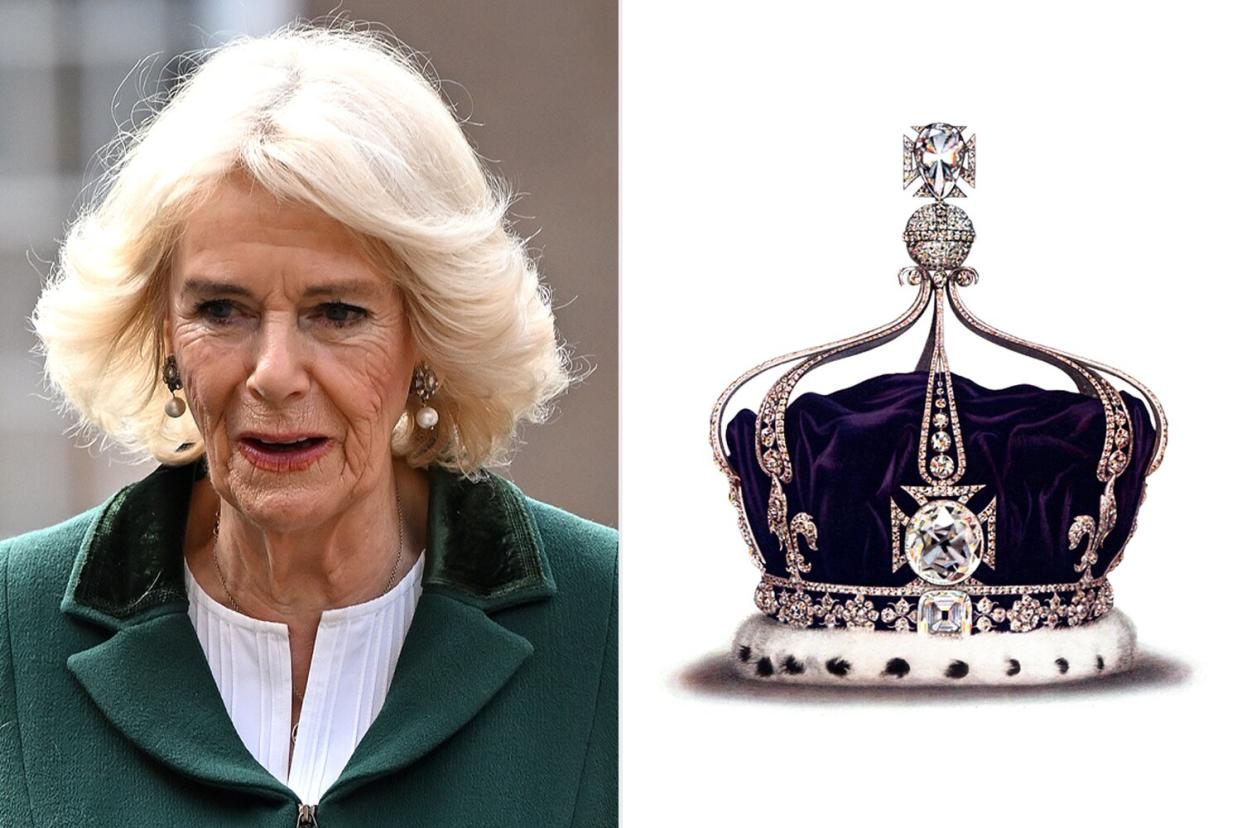
- Oops!Something went wrong.Please try again later.
- Oops!Something went wrong.Please try again later.
- Oops!Something went wrong.Please try again later.
Justin Tallis - WPA Pool/Getty Images; Alamy Stock Photo
Queen Camilla's coronation crown has been revealed — and it won't feature the divisive Koh-i-Nûr diamond.
On Tuesday, Buckingham Palace announced that the Queen Consort, 75, will be crowned with Queen Mary's Crown during the May 6 ceremony beside her husband, King Charles III. The spectacular sparkler is set with 2,200 diamonds and was commissioned by Charles' great-grandmother Mary for the 1911 coronation of her husband, King George V.
The choice avoids the Koh-i-Nûr diamond, a staggering 105.6-carat stone believed to be one of the world's largest cut diamonds. The diamond was featured in the Queen Mother's coronation crown, which she wore to the 1937 coronation of her husband, King George VI, and the 1953 coronation of her daughter, Queen Elizabeth II.
RELATED: King Charles III's Coronation: Everything to Know About the Ceremony and Celebration
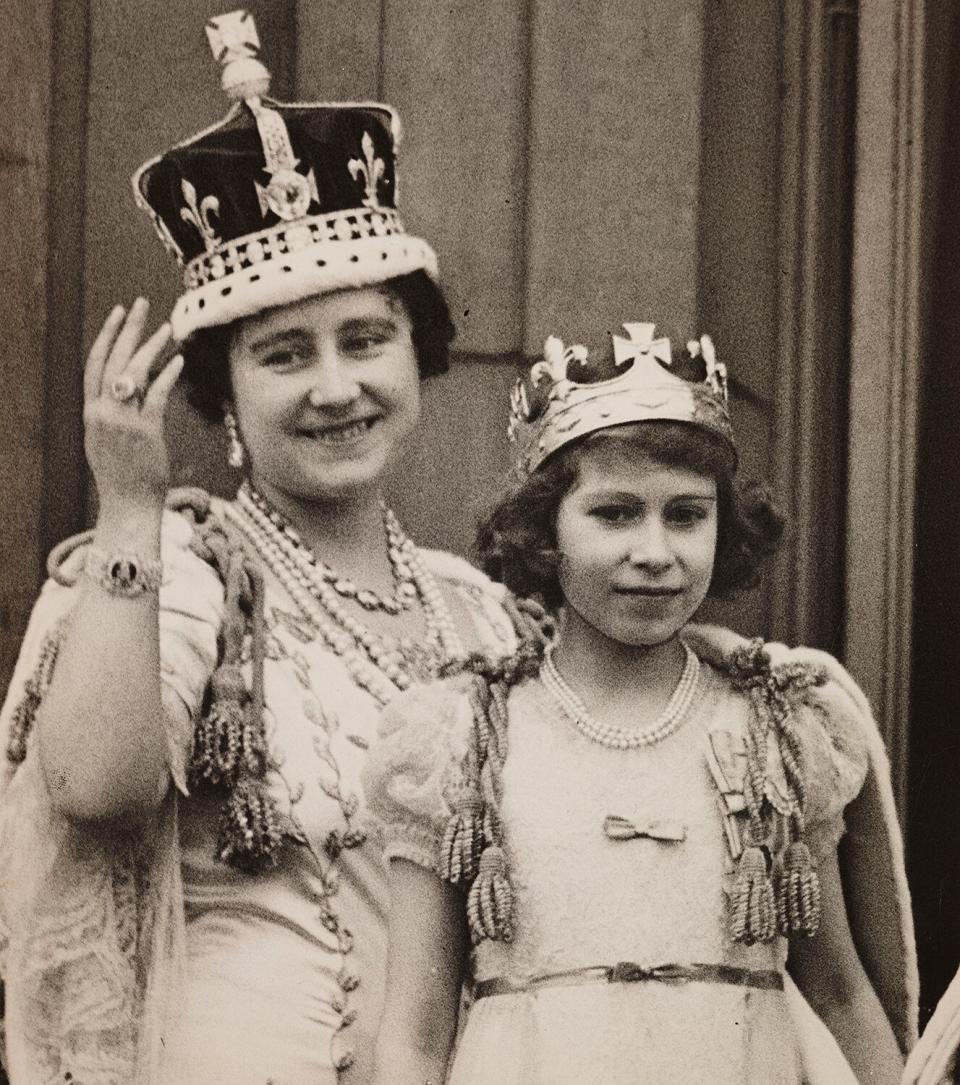
Daily Herald Archive/National Science & Media Museum/SSPL via Getty The Queen Mother with Princess Elizabeth on her Coronation Day in 1937
According to Historic Royal Palaces, the contentious gem is seen as "a symbol of conquest" and was taken into British possession by the East India Company in 1849. Traders took the diamond from 10-year-old Maharaja Duleep Singh, the last ruler of the Sikh empire, and surrendered it to Queen Victoria as part of the peace treaty at the end of the First Anglo-Sikh War.
It has remained in the royal vault ever since, despite periodic calls for it to be returned to India, Pakistan and Afghanistan, which have all made ownership claims.
"Opposing legends have maintained that the diamond is both lucky and unlucky," Historical Royal Palaces states.
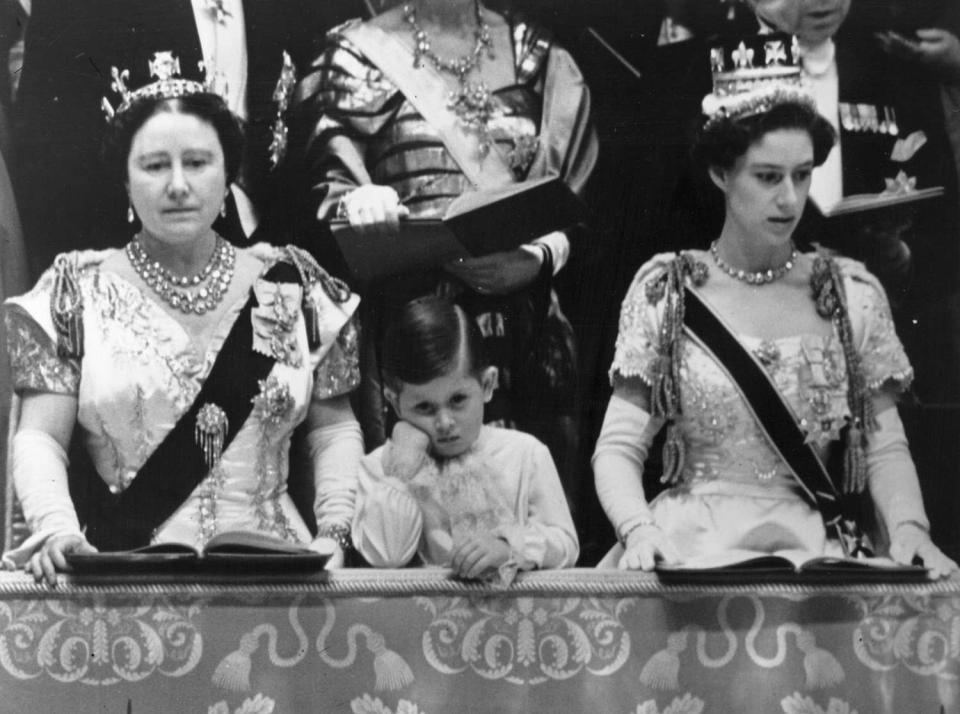
Topical Press Agency/Getty Images The Queen Mother, Prince Charles and Princess Margaret
As plans for the coronation of King Charles and Queen Camilla began to take shape in the fall, it was speculated that the Queen Consort might wear the Queen Mother's coronation crown for the religious ritual. Charles, 74, was very close to his grandmother, and reports swirled that the regal headpiece had always been earmarked for Camilla.
Calling back to the Koh-i-Nûr diamond's problematic past, a source from the Bharatiya Janata Party in India told The Telegraph in October, "The coronation of Camilla and the use of the crown jewel Koh-i-Nûr brings back painful memories of the colonial past."
"Most Indians have very little memory of the oppressive past. Five to six generations of Indians suffered under multiple foreign rules for over five centuries," the source said. "The coronation of the new Queen Camilla and the use of the Koh-i-Nûr do transport a few Indians back to the days of the British Empire in India."
RELATED: Queen Camilla's Coronation Crown Will Be a Modern Royal First — and Honor Queen Elizabeth II
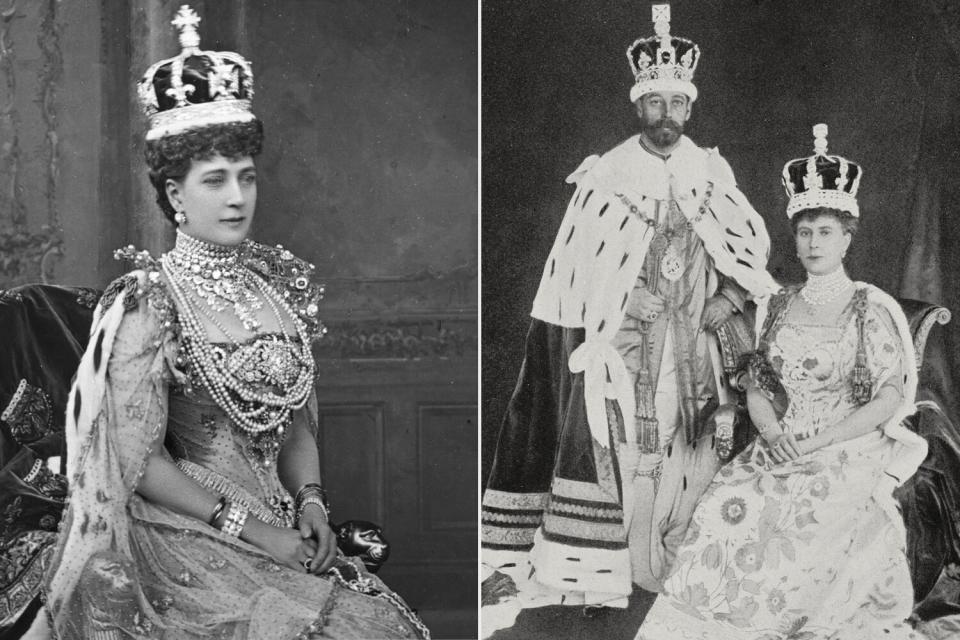
Hulton Archive/Getty Images; De Agostini via Getty Images
Queen Mary's coronation crown originally used the Koh-i-Nûr diamond for the 1911 coronation, as did Queen Alexandra's crown for the coronation of 1902, according to the Royal Collection Trust.
When the Queen Mother had her crown commissioned for the coronation of 1937, she had the giant diamond removed from Queen Mary's crown for her own, as her mother-in-law did before her.
Can't get enough of PEOPLE's Royals coverage? Sign up for our free Royals newsletter to get the latest updates on Kate Middleton, Meghan Markle and more!
Instead of using the Koh-i-Nûr diamond on the headpiece, Queen Camilla's crown is currently undergoing work to set the Cullinan III, IV and V diamonds that were part of Queen Elizabeth II's jewelry collection. The late monarch often wore them as brooches.
According to the Royal Collection Trust, the Cullinan Diamond was found in South Africa in 1905.
"In 1907, the Cullinan was presented to King Edward VII by the Government of the Transvaal," the Royal Collection Trust explains. "It was a symbolic gesture intended to heal the rift between Britain and South Africa following the Boer War. After initial hesitation, the King accepted the gift on the recommendation of the British Government. The stone was taken heavy police escort to Sandringham, and formally presented on the king's 66th birthday."
The diamond was cut into nine pieces, which were numbered. King George V had Cullinan I and II set in the Sovereign's Sceptre and Imperial State Crown, where the stones remain today. The Imperial State Crown, Sovereign's Sceptre and Sovereign's Orb were all used during the September 2022 funeral of Queen Elizabeth.
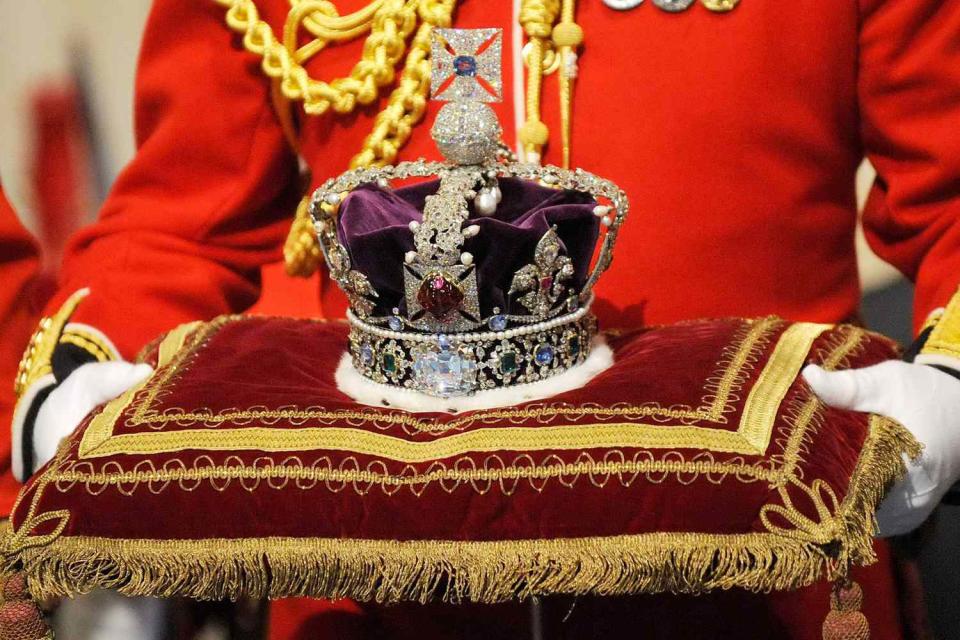
TOBY MELVILLE/AFP via Getty The imperial State Crown
The remaining numbered diamonds were kept by Asschers, the company that cut the diamond, as payment.
"Cullinan VI and VIII were later brought privately by King Edward VII as a gift for Queen Alexandra, and the others were acquired by the South African Government and given to Queen Mary in 1910, in memory of the Inauguration of the Union," the Royal Collection Trust says. "They were bequeathed to Queen Elizabeth II in 1953."

